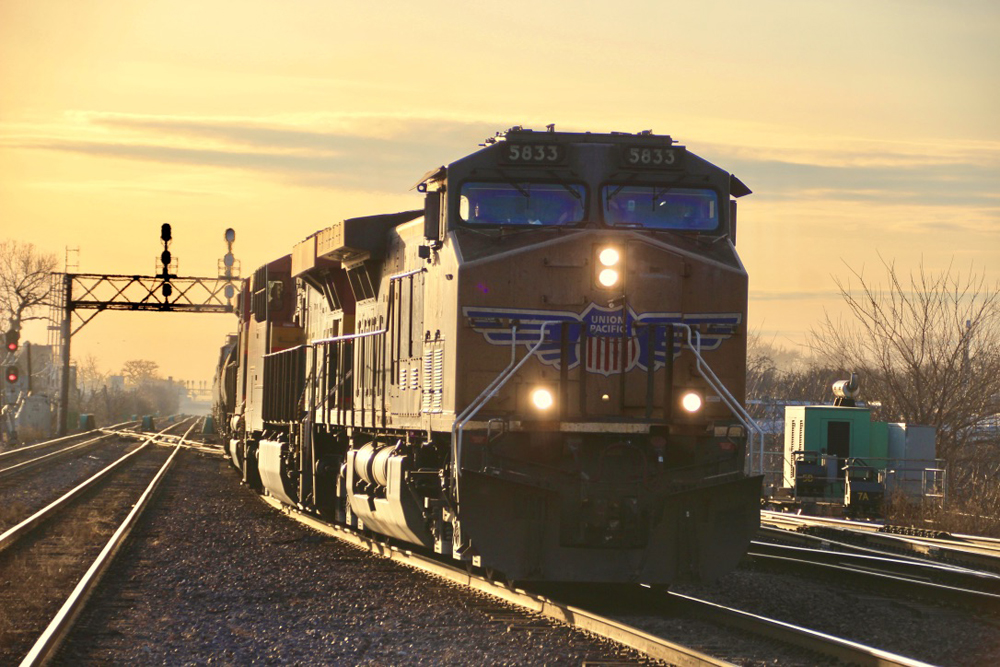
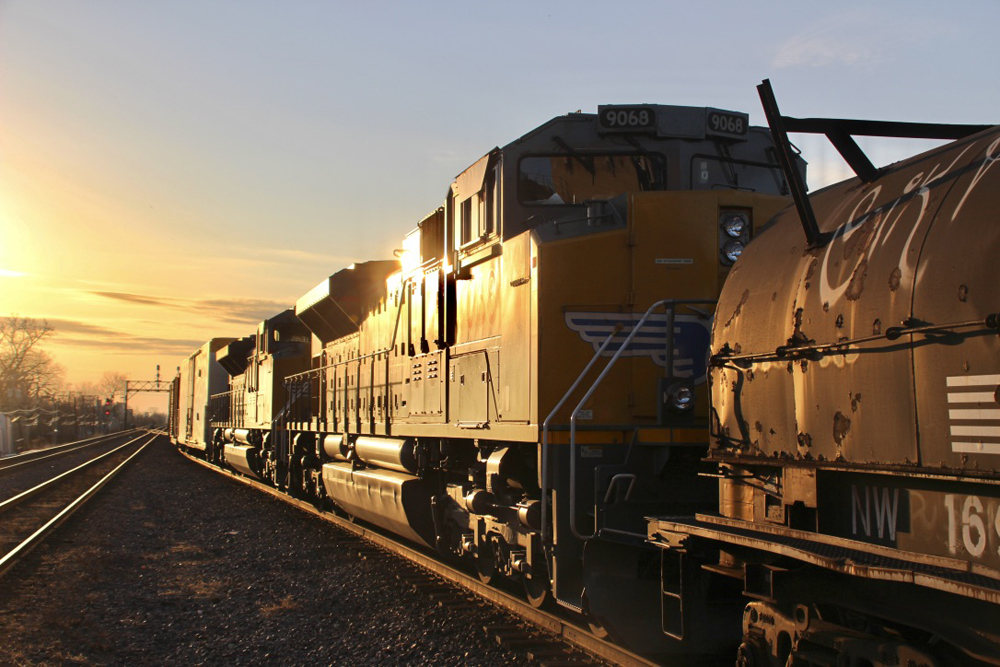
WASHINGTON – The $1.2 trillion infrastructure bill President Biden is slated to sign into law today (Monday, Nov. 15) contains funding for a study of Class I railroads’ use of ever-longer trains and their impact on safety, grade crossings, freight and passenger service, and the environment.
The measure provides up to $2 million for the National Academies of Sciences, Engineering, and Medicine to evaluate the operation of trains longer than 7,500 feet.
The study will examine several operational aspects of long trains, including derailment risks; communication issues between the head end, distributed power units, and end-of-train devices; and train handling and braking. It also will look at whether engineers and conductors need additional training to safely operate long trains.
Congress also asked that the study delve into long trains’ impact on both freight and passenger service, and how frequently and how long they tie up traffic at grade crossings compared to shorter trains.
The railroad industry defends its use of long trains and says that placing a limit on train length — something that’s currently not regulated — would increase greenhouse gas emissions without improving safety or service.
“As the National Academies undertakes their analysis of long trains, railroads are committed to providing them with their perspective and appropriate data on how this practice in the right circumstances enhances freight and passenger rail service and reduces carbon emissions without compromising safety,” says Jessica Kahanek, a spokeswoman for the Association of American Railroads.
The Class I railroads take steps to carefully build long trains, the AAR says, including considering the train’s consist, route profile, and placement of distributed power locomotives.
Union Pacific’s Precision Train Builder system, for example, simulates trains and their routes and identifies where to place cars and distributed power within each train for the safest and most efficient operation. The software considers each piece of equipment in the train consist and can simulate a 300-mile run in about 8 minutes, UP says.
Capping train length would increase fuel consumption and railroads’ production of greenhouse gas emissions. “Based upon 2019 data, limiting train length to 7,500 feet could increase U.S. mainline freight train fuel consumption by 13% or an additional 423 million gallons of fuel annually,” Kahanek says.
The use of longer trains tends to max out the horsepower of a locomotive consist, which helps reduce fuel consumption because diesel-electric locomotives are most efficient in the highest throttle settings.
“Railroads stand by their record on this issue and believe that the ultimate study will demonstrate the real negative impacts of establishing blanket, prescriptive limits to train length,” Kahanek says.
With the exception of Canadian National, the individual Class I railroads referred questions to the AAR. A CN spokesman says the railway looks forward to answering questions and explaining its commitments to safety and reliable operations.
Train length has been growing for decades. But in recent years Class I railroads have put greater emphasis on the use of long trains. The trend has been accelerated by their embrace of Precision Scheduled Railroading and its focus on moving tonnage on fewer trains, the more widespread adoption of distributed power, and a desire to improve fuel efficiency.
All of the Class I systems regularly operate trains that reach or exceed 12,000 feet. Systemwide averages on the big six systems range from a low of 6,900 feet at BNSF Railway to a high of 9,359 feet at Union Pacific, according to recent data.
UP’s train length is up about 30% since late 2018, when it adopted a Precision Scheduled Railroading operating model. UP aims to get its average train length beyond 10,000 feet and over the past three years has been extending sidings to 15,000 feet on its single-track routes in Texas and on main lines leading to and from the Lone Star State.
BNSF has taken a more limited approach to long trains, but still operates double-length intermodal trains that sometimes top 15,000 feet.
In the East, average train length on CSX Transportation has grown 1,000 feet, to around 7,500 feet, since the railroad adopted a Precision Scheduled Railroading operating model in 2017.
Norfolk Southern has set average train length records in each of the past nine quarters, with the average now above 7,000 feet.
Average train length is above 7,500 feet on both Canadian railways, with Canadian National at 8,677 feet in the third quarter and Canadian Pacific at 8,285 feet.
The National Academies must deliver the study to Congress within two years.
A 2019 Government Accountability Office study of train length concluded that additional information was needed to assess their impact and encouraged the Federal Railroad Administration to study the issue.






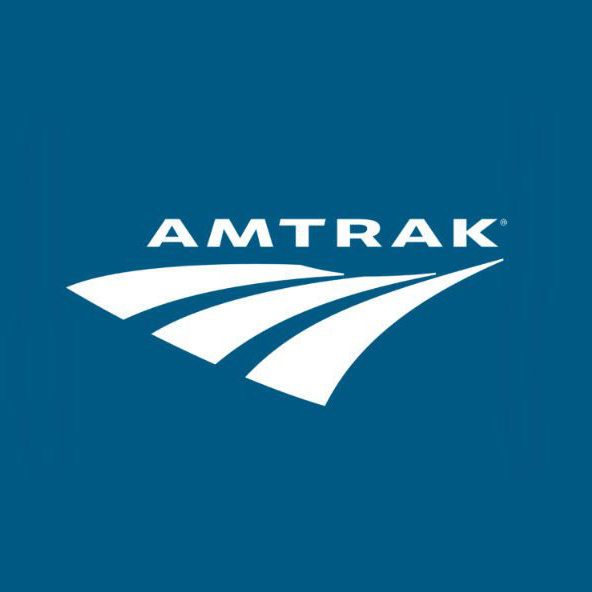
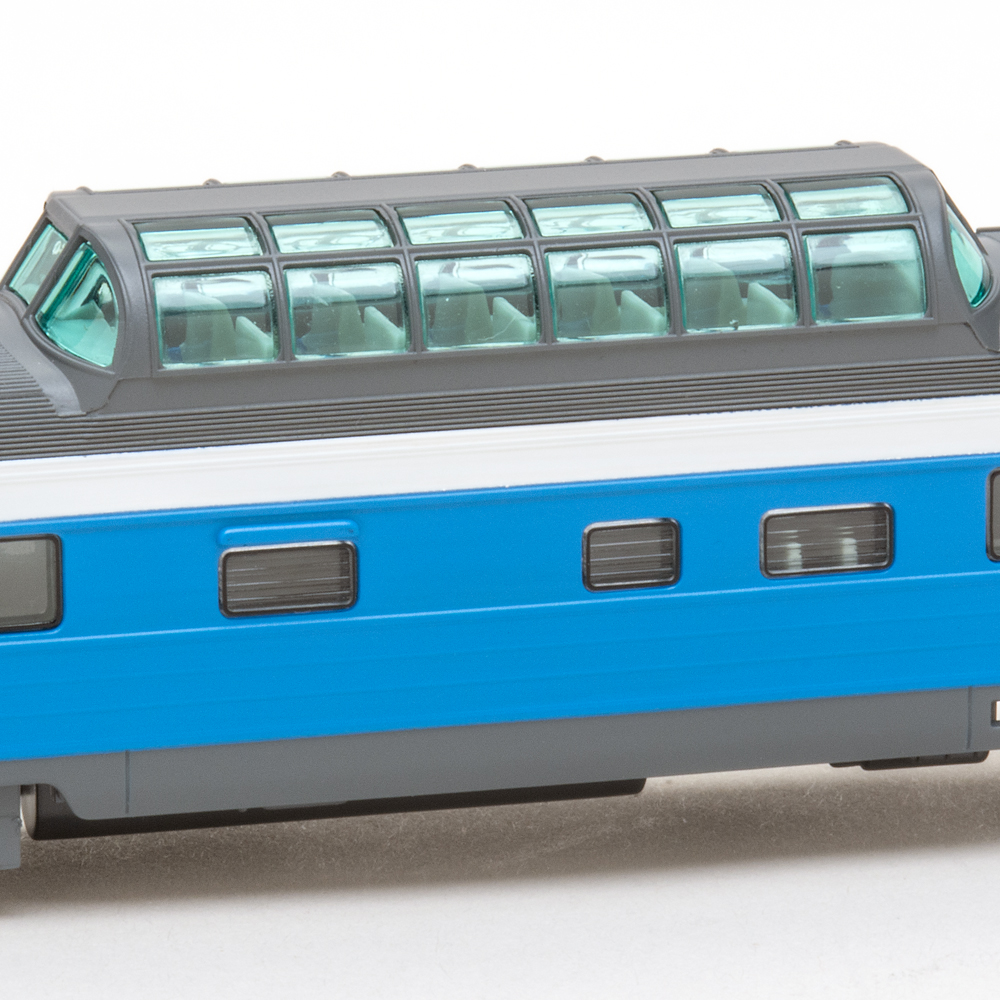
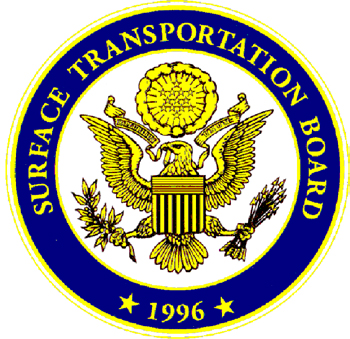
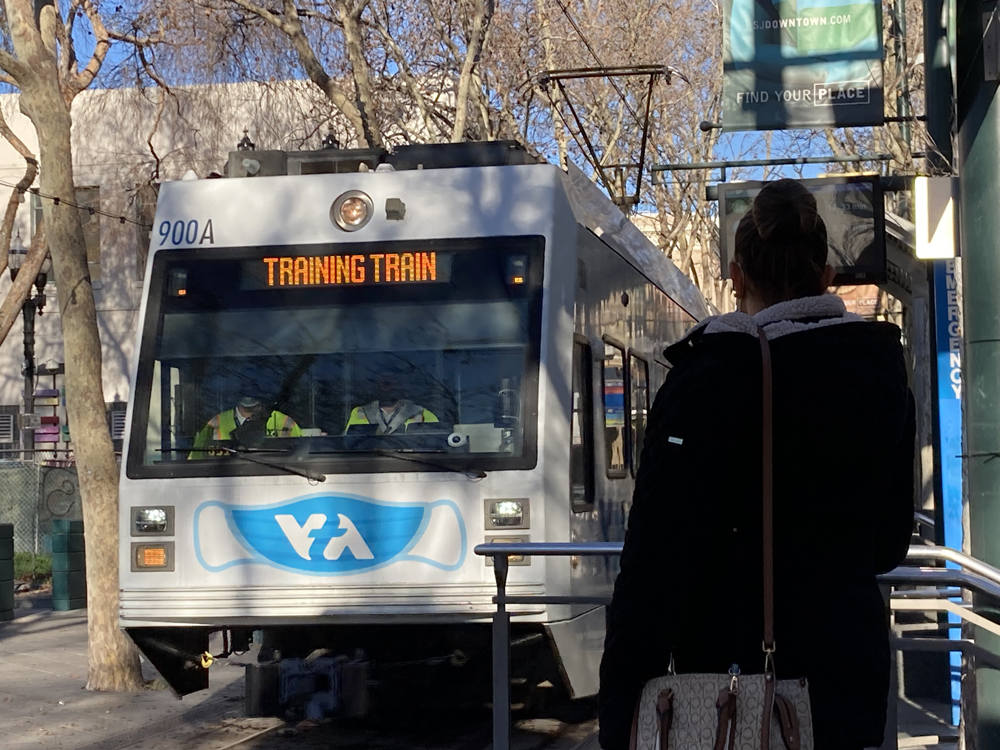




Maybe just maybe all the railroad companies realize they screwed up and that the idea of longer trains and more locos used would be more economical with using less crews but is not. It takes longer to put together the train’s constant wasting crews time, longer to start and stop the trains, can’t fit the longer trains in their destination yard with more time to take them apart. But I think the breaking point is what the price of fuel has come too, the more locos you use the more costly it became. What the answer is shorter trains means faster trains and you think it’s not but the more crews you use the more money is made with product delivered to the customers within a reasonable time frame if not right on time PERIOD.
Diesel engines are “most efficient at higher throttle settings”. Then why do railroads limit throttle settings to # 5 or 6 ? Some “double speak” here by railroads.
I have seen some of these super long freights take as much as 9 minutes to clear a road crossing. That might not seem a long time unless you are the person sitting in your car waiting on the train to clear. Then it seems like forever. If you are an ambulance or fire truck or police———good luck.
Add to the above some “automatic” train controls like Trip optimizer and you will most likely suffer delays. A coal train from Wyoming to lower Texas using T O suffered 17 break in twos. How would you like to be sitting at a crossing for that?
Only two items come to mind when talking about train size and safety isn’t one of them. Fuel savings and less crews are the only reason class 1 railroads are increasing train size. The environment, safety of crews and the public have no barring on PSR.
There’s a lot of factors with this issue but just focusing on public grade crossings and, by the way, we also had some private grade crossings that could not be blocked. (For example, while there probably aren’t many, many folks who have a private or shared private drive crossing a mainline and maybe there isn’t any law or regulation stating private crossings must not be blocked for longer than 10 minutes, or whatever, if one of these crossings gets blocked and someone’s home burns down or someone dies it’s not going to be good.) Given in some state’s there are laws limiting the amount of time a public crossing can be blocked by a train, increasing train lengths into the range of 7,500 to 15,000 feet, seems like all is good as long as those trains keep moving but what happens when they need to park, for a little or a lot? Yes, they are lengthening sidings right and left and building brand new ones to allow passes and meets but unless they’re also closing public crossings, how many places does an engineer have on a given district to park his train for an unlimited or unknown amount of time when something comes up, like a broken rail, river bridge lined for river traffic, vehicle stuck on tracks or any other type of delay that affects this big, long train but actually isn’t directly caused by it. I think state laws on public crossings being blocked longer than allowed excepts emergencies but the emergency situation isn’t the train blocking the crossings, it’s somewhere else. Seems like these days, SOP is just block the crossings but they shouldn’t be doing that routinely. If conductors starting getting off their trains and cutting crossings and applying hand brakes on separated portions when its apparent extended delays are imminent, wow, imagine the gridlock and delays!
As a conductor on the railroad id just like to say the trains r to long and heavy. It is a safety concern. They block crossings for hours at a time and the railroads dont care. A lot of these trains don’t use distributed power and some of the engines are at their max for power causing a lot of maintenance.
Judgement Day is coming on this and for the PSR-addicted Class 1s and their AAR apologists and shills. I sure don’t know what or who will bring it on. But Judgement Day is coming.
When I hired out in 2004 7,000 feet was a long train. Last month I had a train that was 16,500 feet! I can’t tell you the last time I had a train under 10,000. It’s gotten ridiculous. Then take into account all these trains do “block swaps”now. Now going from A to B is no big deal but when a train does work and you have a conductor riding the rear safety goes out the window. First off, radio communication starts to cut off at 7,000 ft and most of these trains now are double that. Secondly, the amount of slack in these trains is so great that people are getting injured constantly. I repeat, safety has gone out the window.
Riding a mixed train in Canada once (one of the remote services no longer running) I was instructed about slack running out. The train couldn’t have been 2,000 feet, probably well under that.
Distributed power relieves slack action – to a point and if properly handled.
As was noted above, I wonder whether these super long trains are providing freight railroads a ‘reason’ to exclude passenger traffic when they had less need to in the past. They certainly do pose some real problems on single tracked lines, and super busy double track.
If a long train of 11,000 feet derailed at front of the far crossings here it could block all 4 grade crossings in town. Next available crossings are 8 miles north or 12 miles south 1/2 of trip over very rural toads. Ambulance services are almost all west. Fortunately one fire station each side of track but they back up each other frequently due to limited rural water or especially 2 calls at same time on one side.
.
Don’t know where you live—where I live it’s equivalent..
I suspect that the reliability of air brakes must have been greatly improved in order to make these long trains feasible. Sudden emergency brake applications in trains can cause derailments or shifted loads, which can also wreck opposing trains. A multi-million dollar accident would negate a lot of crew and fuel savings.
Unfortunately, converging with the operational challenges of long trains is RRs’ current difficulty in hiring crews. In other words simply shortening trains and running more of them to move the same tonnage may not be a slam dunk if you can’t hire enough crews.
Westbound UP through Tucson the other day was 770 axles. Major problems are grade crossing delays, can not be put into short sidings, delays for stopping. 2 man crews on these behemoths are extra stressed if they have delays for going into emergency or detector failures. Walking these trains in bad weather conditions or remote locations can lead to safety issues.
Heavens forbid when there is a medical emergency and the nearest hospital is on the opposite side of the grade crossing with a three-mile long freight train on it, blocking EMS.
This is a dispute in which I have little sympathy for either side. Many rail observers posting on these pages have documented that the two freight carriers are making unreasonable demands.
On the other side of the dispute are the Gulf Coast passenger rail advocates. What really is accomplished by two train pairs from Mobile to New Orleans? Is it fair to say these advocates are asking for a toy train under the Christmas tree? This won’t get us any closer to a national passenger rail system.
Then there is me in the middle. I struggle to see a path forward for passenger rail in the growing southeastern states. As a frequent traveler to Nashville where I have have gotten to know the rail infrastructure, I’m tossing in the towel. Any proposal either for regional trains, or for Amtrak connecting to Chicago and Atlanta, will run into reality. Reality is such that (1) the track capacity doesn’t exist and (2) the passenger trains would run at a crawl on unfavorable schedules. See you at BNA Nashville International or ATL Atlanta Hartsfield.
Sorry folks I posted under the wrong article. Too early in the morning. This comment is about the New Orleans – Mobile train.
Fixed it for you Charles, 6:43 isn’t that early
Can you say: “Unfunded Mandate” ahead.
More government…….